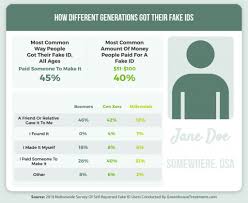security measures
Introduction: The Need for Evolving Security Measures
In an increasingly interconnected world, security measures are no longer optional; they are essential. From safeguarding digital assets in cyberspace to ensuring physical security in offices and homes, the array of threats continues to grow in both complexity and frequency. The importance of investing in robust security systems is paramount for businesses, governments, and individuals.
The evolution of security is closely linked to technological advancements and the sophistication of cyber-attacks and physical intrusions. Modern security measures must combine advanced technologies, comprehensive risk management strategies, and real-time threat mitigation capabilities to meet the challenges of today and tomorrow.
This article aims to provide a thorough exploration of the contemporary security landscape, diving into cybersecurity solutions, physical protection systems, and the integrated approach required to stay ahead of potential threats.
Part 1: Understanding Security Measures and Their Importance
1.1 What are Security Measures?
Security measures encompass a broad range of actions, devices, and strategies implemented to protect assets from threats, whether physical, digital, or a combination of both. These measures are tailored to address various levels of risk, depending on the type of asset being protected, and can range from simple locking mechanisms to advanced artificial intelligence-powered cybersecurity systems.
- Physical Security Measures: These involve securing physical locations like homes, offices, and public infrastructure against unauthorized access, vandalism, theft, and other threats.
- Cybersecurity Measures: These focus on protecting digital systems and sensitive information from cyber-attacks such as hacking, phishing, malware, and ransomware.
1.2 The Growing Threat Landscape
The threat landscape is evolving rapidly, with both cyber and physical threats becoming more sophisticated. The growth of smart technologies, IoT devices, and cloud computing, while providing convenience and efficiency, has also increased potential vulnerabilities.
Physical Threats:
- Increased use of sophisticated tools by criminals to bypass traditional security systems.
- Insider threats from employees or contractors gaining unauthorized access to restricted areas.
- Terrorism and organized crime targeting public or private properties.
Cyber Threats:
- Ransomware attacks are crippling businesses by encrypting data and demanding ransom.
- Phishing and social engineering attacks trick individuals into revealing sensitive information.
- Data breaches expose personal and financial information, leading to identity theft and financial fraud.
1.3 The Financial and Reputational Costs of Inadequate Security
Inadequate security measures can lead to significant financial losses and damage to a company’s reputation. According to studies, the global cost of cybercrime is expected to reach $10.5 trillion annually by 2025, highlighting the immense scale of the issue. Additionally, businesses that suffer from physical breaches may incur losses due to theft, property damage, or the disruption of operations.
A high-profile security breach can also tarnish a brand's reputation, leading to a loss of customer trust and long-term financial implications. The cost of recovering from a breach—legal fees, compensations, system repairs, and increased insurance premiums—can be overwhelming for businesses of all sizes.
Part 2: Key Features of Modern Security Solutions
2.1 Cybersecurity: Protecting the Digital Frontier
As digital transformation accelerates across industries, cybersecurity solutions are critical to safeguarding sensitive data and ensuring business continuity.
2.1.1 Advanced Encryption Standards (AES)
Encryption is the foundation of secure communication over the internet. AES is the gold standard in encryption technologies, providing robust protection for sensitive information, whether in transit or at rest.
2.1.2 Multi-Factor Authentication (MFA)
MFA adds an extra layer of security by requiring users to provide multiple forms of verification before accessing a system. This significantly reduces the risk of unauthorized access, even if passwords are compromised.
2.1.3 Firewalls and Intrusion Detection Systems (IDS)
Firewalls act as the first line of defense by monitoring incoming and outgoing traffic, while IDS tools help identify and respond to potential intrusions in real-time, blocking malicious activity before it can cause harm.
2.1.4 Artificial Intelligence and Machine Learning
AI and ML are increasingly being integrated into security systems to predict, detect, and respond to threats autonomously. These technologies enable security teams to anticipate new forms of attacks and respond in real-time.
2.1.5 Cloud Security
With more businesses migrating their operations to the cloud, securing these environments is a top priority. Cloud security solutions involve protecting data, applications, and infrastructure hosted in the cloud from unauthorized access and breaches.
2.2 Physical Security: Safeguarding the Real World
2.2.1 Access Control Systems
Modern access control systems include biometric authentication (fingerprints, facial recognition), RFID keycards, and mobile-based access to ensure only authorized personnel can enter secure areas.
2.2.2 Surveillance and Monitoring Technologies
High-definition CCTV cameras equipped with motion detection, night vision, and AI-based anomaly detection are essential for monitoring premises around the clock.
2.2.3 Smart Locks and Automated Barriers
Smart locks connected to the internet allow for remote locking and unlocking of doors, while automated barriers ensure that entry points are secured based on pre-set conditions or real-time alerts.
2.2.4 Alarm Systems
Intrusion detection systems linked with alarms are vital for alerting property owners or security personnel to any unauthorized access attempts, enabling rapid response.
2.2.5 Physical Risk Assessments
Conducting regular physical security assessments can help identify vulnerabilities in a facility’s defense mechanisms and suggest improvements in layout, access points, and emergency response plans.
Part 3: The Integration of Physical and Cybersecurity
3.1 The Convergence of Security Disciplines
Traditionally, physical security and cybersecurity were treated as separate domains. However, as modern threats blur the line between physical and digital, an integrated approach is necessary.
For example, smart buildings use IoT devices that connect physical security systems to the internet. While these systems improve convenience, they also introduce cybersecurity vulnerabilities that could compromise the physical infrastructure if breached. By combining cybersecurity protocols with physical security systems, organizations can create a comprehensive security architecture.
3.2 Unified Threat Management (UTM)
Unified Threat Management solutions provide a comprehensive approach to security by integrating multiple technologies—such as firewalls, antivirus software, and intrusion detection—into a single platform. This holistic approach ensures that all aspects of an organization’s security are protected by a single, streamlined system.
3.3 Incident Response Planning
An effective security strategy must include a well-developed incident response plan that coordinates both physical and digital responses to security breaches. This plan should outline roles, communication channels, and steps for mitigating damage in case of an attack.
Part 4: Market Analysis of the Security Industry
4.1 Global Market Trends in Security Solutions
The global security market has been growing steadily, driven by increasing threats and the need for businesses and individuals to protect their assets. In 2023, the global security market was valued at approximately $128.4 billion and is expected to grow at a compound annual growth rate (CAGR) of 8.7% through 2028.
4.2 Cybersecurity Market Trends
The rise of cloud computing, mobile devices, and IoT has driven exponential growth in the cybersecurity market. The most significant areas of growth include:
- Cloud Security Solutions: With more businesses moving their infrastructure to the cloud, the demand for cloud-specific security tools has surged.
- AI-Powered Security Tools: AI's ability to predict and mitigate threats before they occur has led to increased investment in these technologies.
- Zero-Trust Architecture: Zero-trust principles—where no one is automatically trusted, even inside a network—are becoming a key element of security strategies for businesses and governments.
4.3 Physical Security Market Trends
The physical security market is also experiencing significant growth, fueled by concerns over property crime, terrorism, and vandalism.
- Smart Home Security: More homeowners are adopting smart security systems that integrate cameras, alarms, and locks with their smartphones, allowing remote access and control.
- Biometric Access Control: Biometric systems like fingerprint scanning and facial recognition are becoming standard features in high-security facilities.
- Integrated Surveillance Systems: Security systems that combine cameras, motion sensors, and alarm systems are seeing increased adoption in commercial properties, particularly in high-traffic areas like airports and shopping malls.
Part 5: Target Audience for Security Measures
5.1 Business Enterprises
Large corporations and SMEs (Small and Medium Enterprises) form a significant portion of the market for security measures, investing in both cybersecurity and physical security solutions. Key concerns include:
- Protecting proprietary data and intellectual property.
- Ensuring compliance with data protection regulations such as GDPR and HIPAA.
- Maintaining operational continuity in the event of a cyber or physical breach.
5.2 Government and Public Institutions
Governments are major consumers of security solutions due to the need to protect critical infrastructure, sensitive data, and the general public. National security agencies, defense contractors, and law enforcement agencies require state-of-the-art technologies for surveillance, access control, and threat detection.
5.3 Healthcare Sector
The healthcare industry is particularly vulnerable to cyber-attacks, given the sensitive nature of patient data. Security measures are necessary not only for protecting digital health records but also for ensuring physical security in hospitals and clinics, particularly during emergencies.
5.4 Homeowners and Individuals
There is a growing market for consumer security products, especially smart home security systems that combine convenience and safety. These products target tech-savvy homeowners who prioritize ease of use, remote monitoring, and integration with other smart home devices.
5.5 Educational Institutions
Universities, schools, and colleges must invest in security to protect students, staff, and valuable research data. This includes both cybersecurity measures to guard against data breaches and physical security systems to monitor campuses and control access to facilities.
Conclusion: The Future of Security Measures
As technology continues to evolve, so too will the threats faced by individuals and businesses. The security industry is at the forefront of innovation, developing cutting-edge solutions to address emerging challenges in both the physical and digital realms.
An integrated, comprehensive approach to security—one that combines the latest cybersecurity technologies with robust physical protection systems—is essential to staying ahead of evolving threats. Whether it’s safeguarding critical infrastructure or securing personal spaces, investing in the right security measures is crucial for building a safer tomorrow.
The future of security will likely see the convergence of more advanced AI-driven tools, biometric solutions, and seamless integration of systems, ensuring that the safety of individuals, businesses, and governments remains a top priority in an ever-changing world.
 fake identification industry
fake identification industry
 fake Florida driver’s license
fake Florida driver’s license
 security measures
security measures
 High-quality fake ID design
High-quality fake ID design